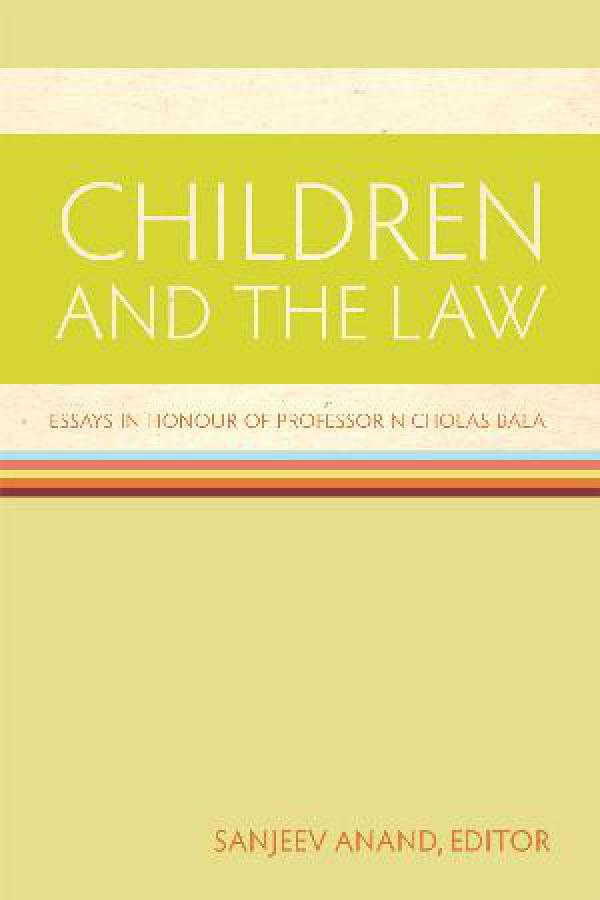| Author(s) | Jamal K. Mansour; Michelle I. Bertrand; Natalie Kalmet; Rod Lindsay |
|---|---|
| Publication Year | |
| Publisher |
Factors Influencing the Eyewitness
Identification Accuracy of Child Witnesses
From: Children and the Law
$2.10
Review of identification procedures and children’s identification accuracy.
Contributors
Natalie Kalmet
Natalie Kalmet is currently a PhD candidate at Queen’s University and holds an MS, also from Queen’s University. She conducts research on eyewitness identification techniques, including the utility of presenting multiple views of faces in lineups and the impact of photo size on identification accuracy. She has presented posters at conferences for the American Psychology-Law Society, as well as a talk at a conference for the Society for Applied Research in Memory and Cognition. She has received two Joseph-Armand Bombardier Canada Graduate Scholarships from the Social Sciences and Humanities Research Council of Canada (SSHRC) — she currently holds the SSHRC Doctoral Scholarship, and held the SSHRC Master’s scholarship during her MS.
Rod Lindsay
Rod Lindsay is a professor of Psychology at Queen’s University where he has been studying eyewitness issues since 1982. Dr. Lindsay has testified as an expert on eyewitness issues in both criminal and civil cases and consulted with individual police identification officers and departments regarding identification procedures. He consulted on and was called to testify in one of the United Nations war crimes (genocide) trials for Rwanda. As a member of the Technical Working Group for Eyewitness Evidence (US National Institute of Justice), Dr. Lindsay co-authored the American national guidelines for obtaining and preserving eyewitness evidence (published in 1999 as Eyewitness Evidence: A Guide for Law Enforcement). Dr. Lindsay co-edited and co-authored several chapters of the Handbook of Eyewitness Psychology (London: Psychology Press, 2007), the most comprehensive collection of scientific views on eyewitness issues to date. In 2002, the Canadian Psychological Association bestowed a career award on Dr. Lindsay for his Distinguished Contributions to the Application of Psychology.
Michelle I. Bertrand
Michelle I. Bertrand is a PhD candidate in Social-Personality Psychology at Queen’s University and has earned her MA in the same program. Her research, in the area of psychology and law, has included testing the effectiveness of new lineup presentation methods, surveying Canadian and American police officers on their identification procedures, and examining methodological issues in psychology and law research. She has held scholarships from the Social Sciences and Humanities Research Council of Canada during her MA and PhD, as well as an Ontario Graduate Scholarship during her PhD. She has articles in refereed journals as both first and co-author, has presented a talk at a conference for the Society for Applied Research in Memory and Cognition, and had multiple poster presentations at conferences for the American Psychology-Law Society, the Canadian Psychological Association, and the American Psychological Association.
Jamal K. Mansour
Jamal K. Mansour earned her PhD from Queen’s University in July 2010 and is currently an assistant professor at Simon Fraser University. She has published her research in journals such as Applied Cognitive Psychology and Legal and Criminological Psychology and has presented her research at the American Psychology-Law Society, the Society for Applied Research in Memory and Cognition, and the Society for Personality and Social Psychology. Dr. Mansour’s research focuses on how people make decisions about faces. She is particularly interested in how eyewitnesses make decisions about police lineups and the mechanisms of basic face recognition. Recent work includes eyewitness decisions when viewing conditions vary or lineups are biased, the relationship between confidence and accuracy in lineup decisions, theories of eyewitness lineup decisions, and how face recognition varies with encoding conditions.







